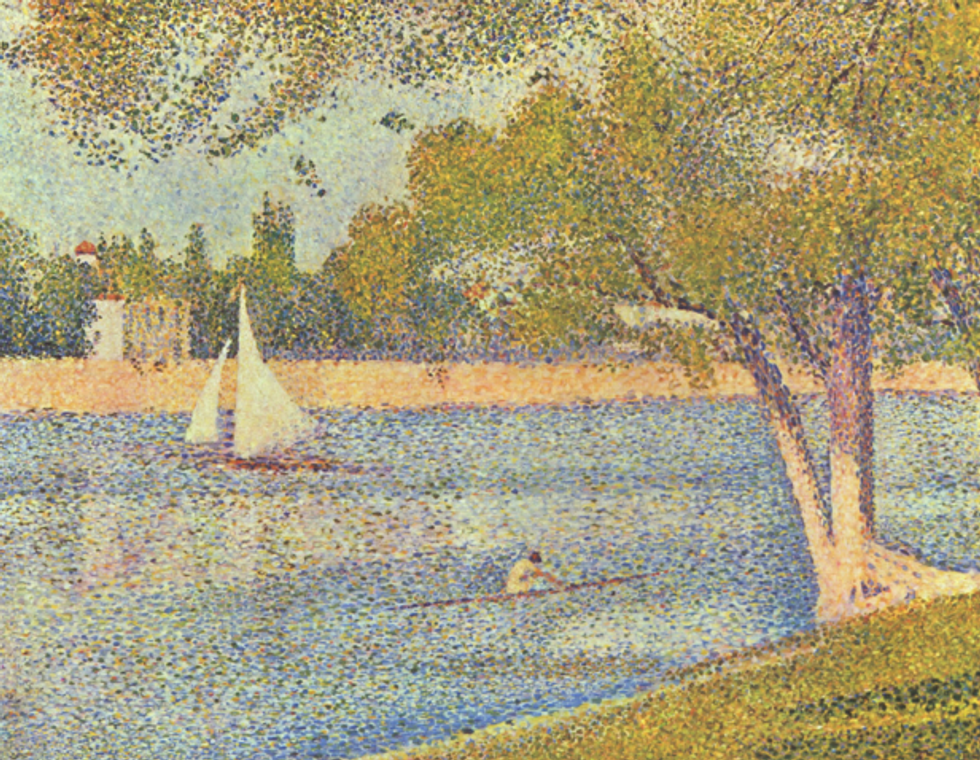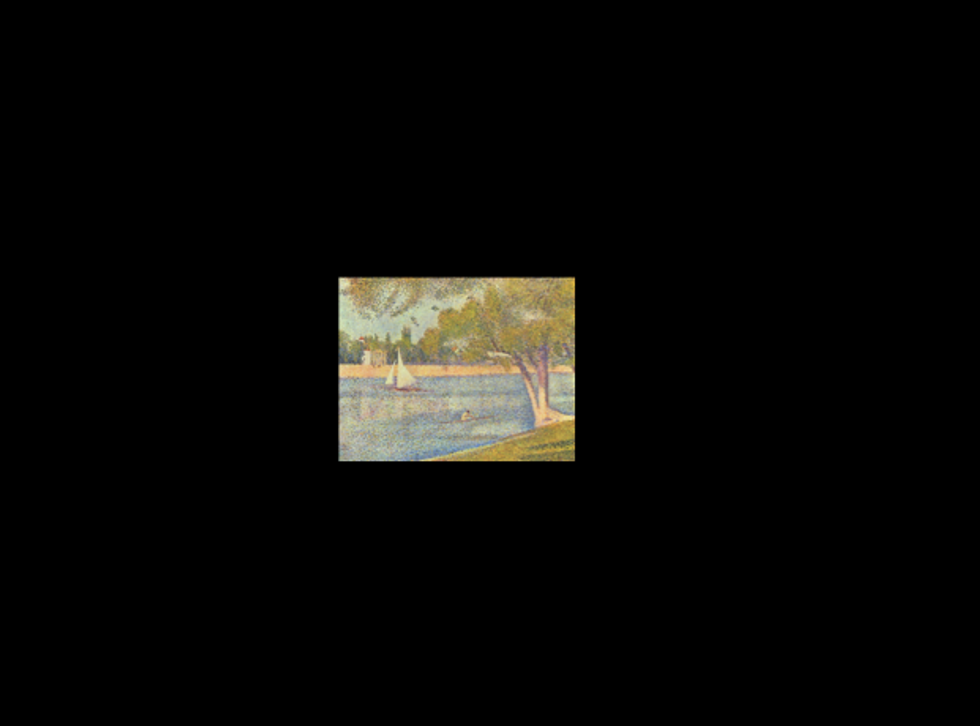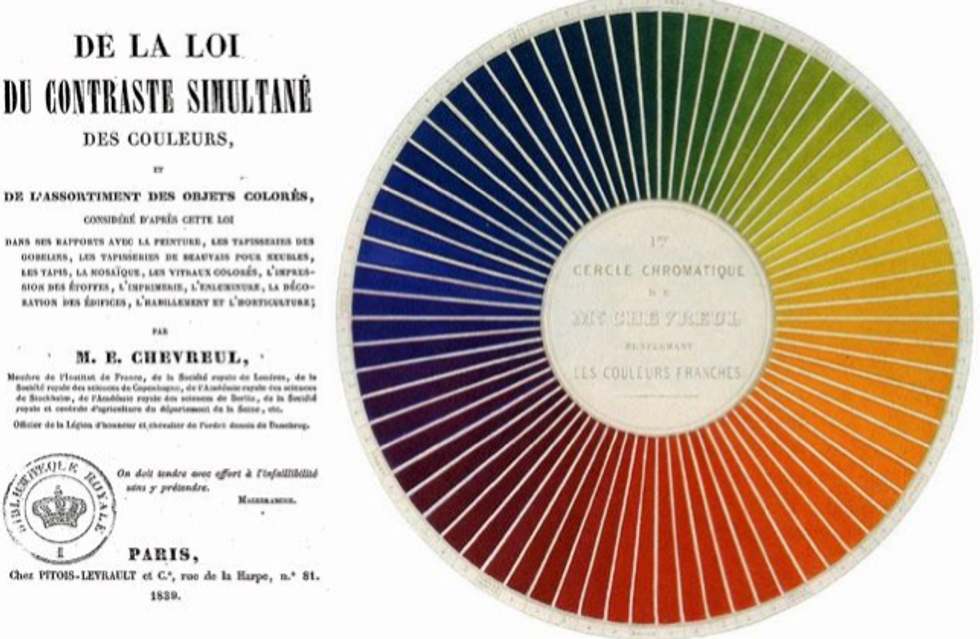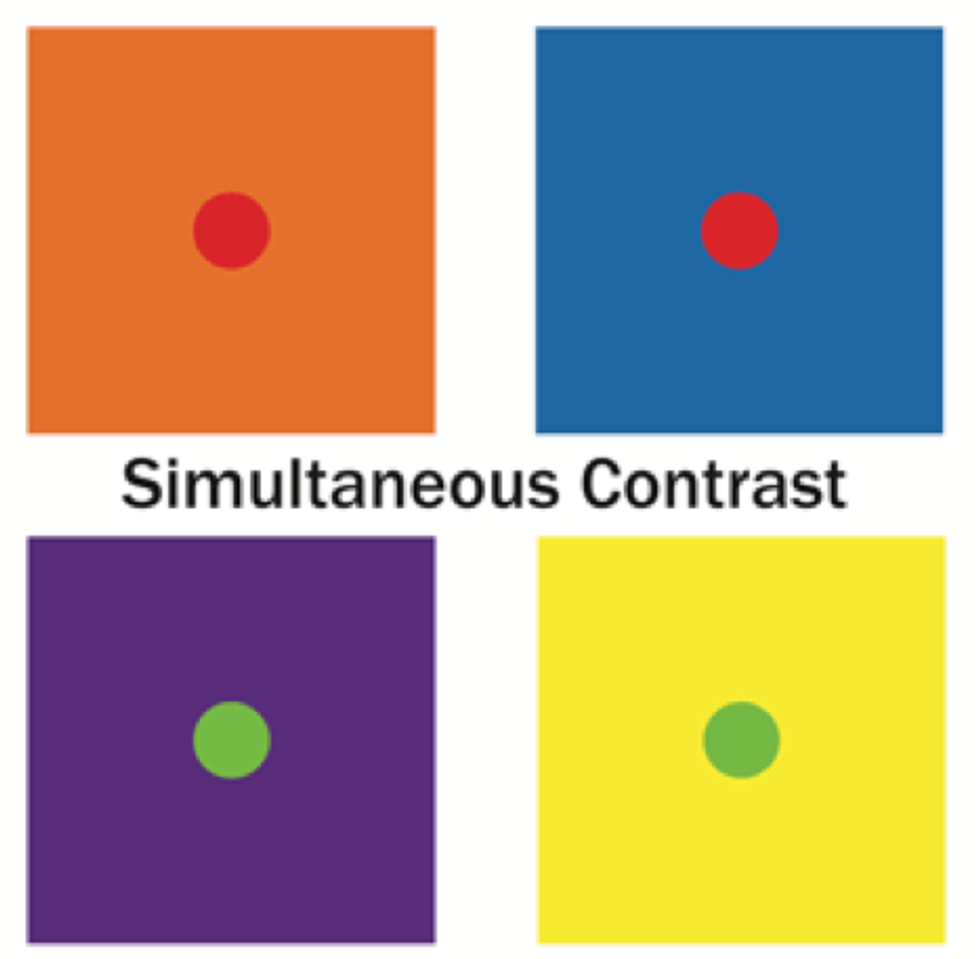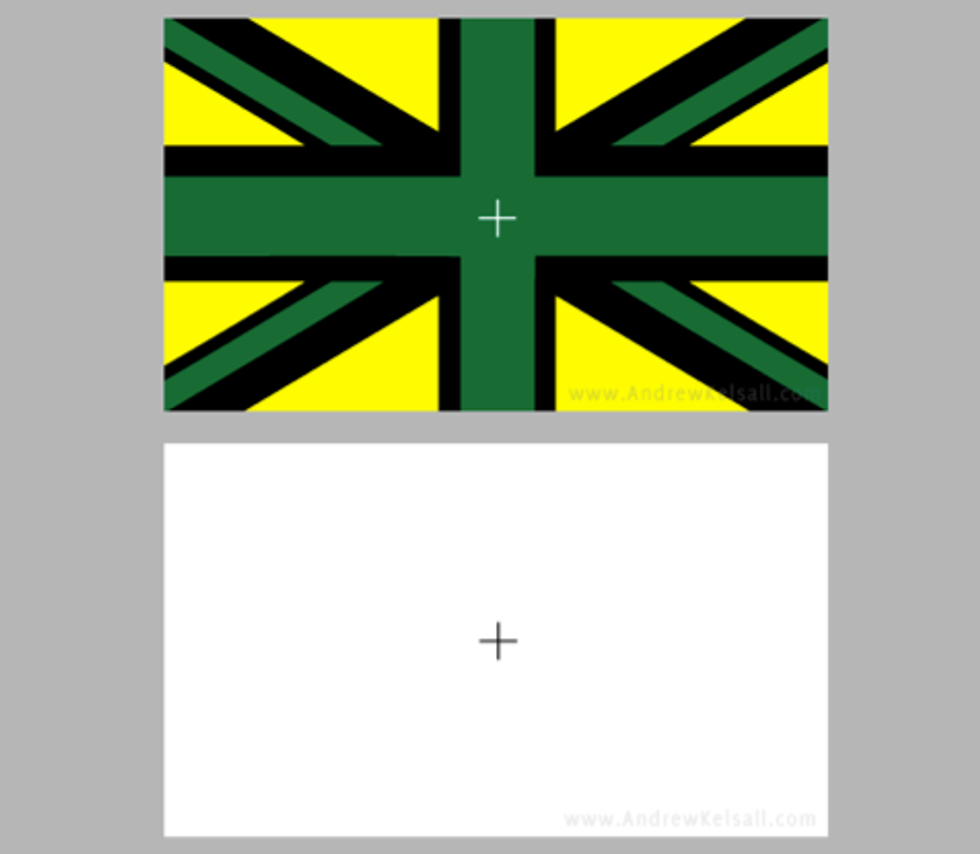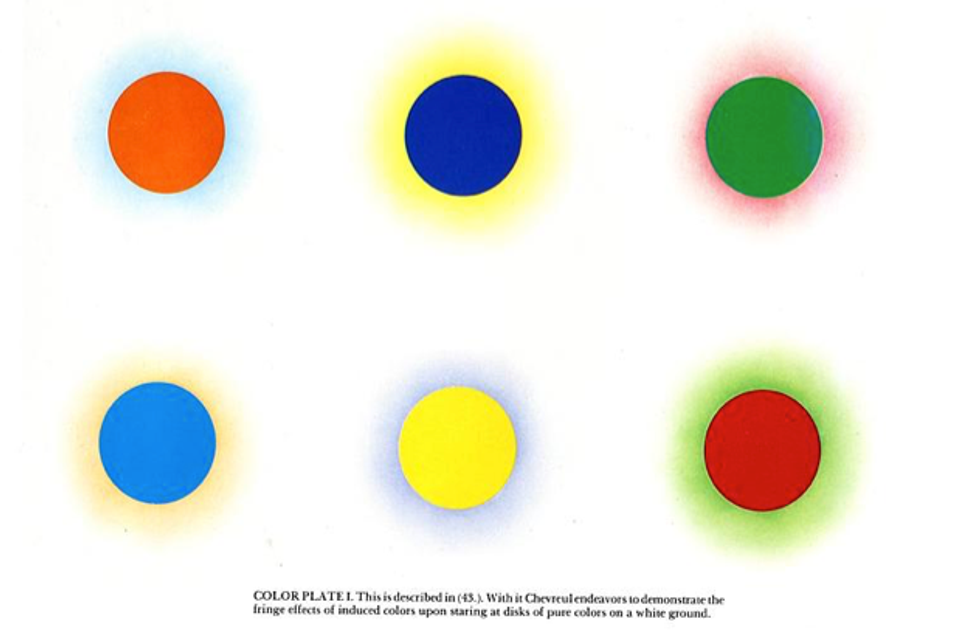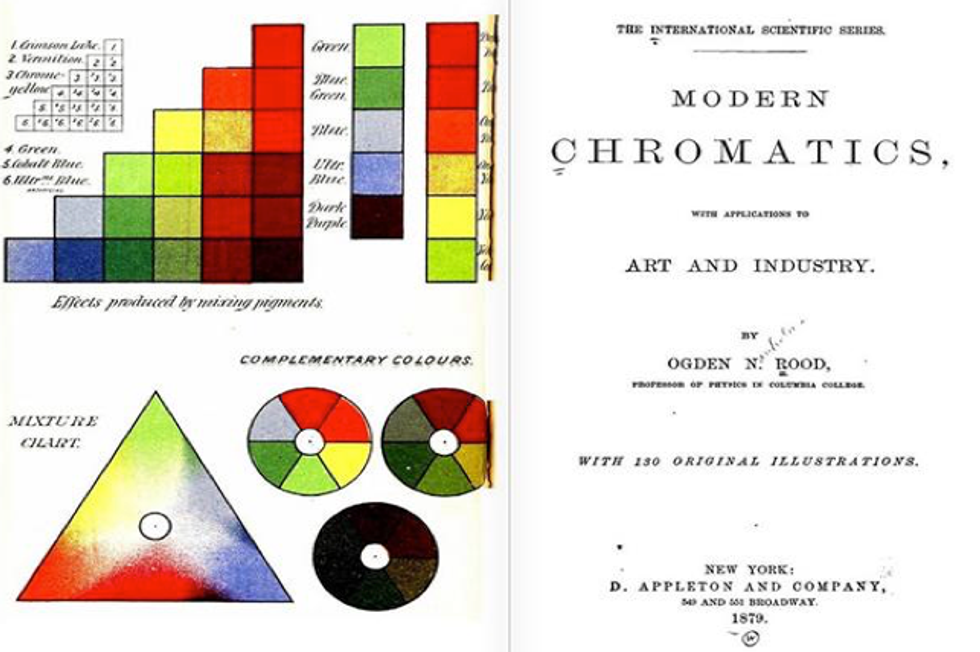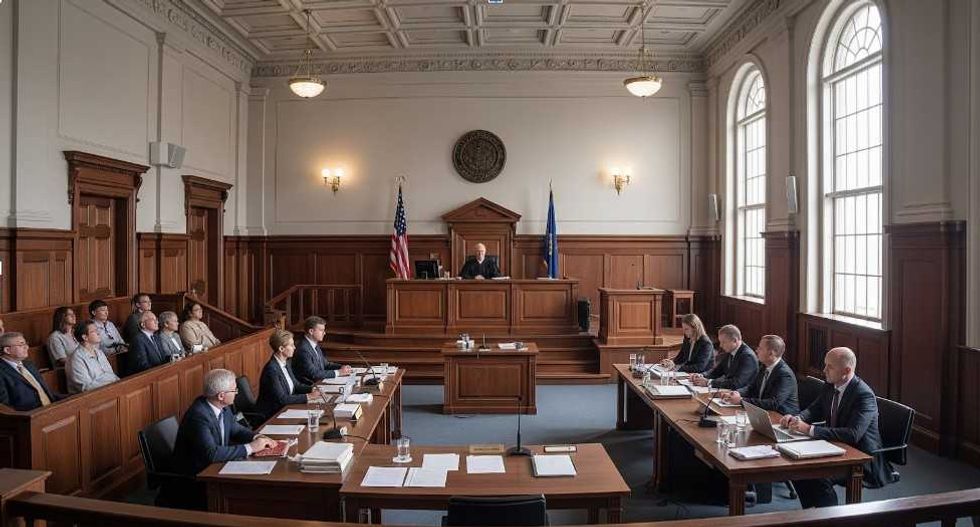Last semester, I wrote a paper discussing the impact scientists Michel Eugène Chevreul and Ogden Rood had on the lead neo-impressionist artists Georges Seurat, Paul Signac, and Camille Pissarro. Through the analysis of Eugène Chevreul’s The Law of Simultaneous Contrast and Harmonization of Colors (1885) and Ogden Rood’s Modern Chromatics (1879), conclusions can be drawn on how their principles impacted the neo-impressionists’ paintings in the development of divisionism.
Basically, it is all about how are eyes see colors in relationship to other colors. Instead of giving you the twenty-five-page paper that would bore you to death, I am just going to give you the fun and interesting stuff!
The neo-impressionists used the scientific principles of color to develop the painting method known as divisionism. This is the dividing and recomposing of color using dots of chromatic analogous and complementary colors to create the optical impression of the intended color when viewed at a certain distance. As an example, you can see how our eyes optically blend colors when viewing a neo-impressionist painting up close versus far away.
As you can see, the red appears brighter in the blue square, even though bother circles are the same hue.
Next, Successive contrast occurs the moment at which the eye having stared at a color object for a length of time, upon turning the gaze away sees an after image of those objects in their complementary colors. Again, here is an example:
Look at the image of the flag for 30 seconds before looking at the black x. Your eyes should see an after image in complementary colors!
Last, mixed contrast happens when the eye perceives the complementary color of the object first seen and a new colored object at the same time. Here is an exaggerated example. This is most noticeable at the edges between colors.
Mixed contrast is very noticeable in Seurat's Bathers at Asnières. ca. 1884.
Ogden Rood’s writing and color diagrams impacted artist’s understanding of additive color mixing versus subtractive color mixing.
At first, it was assumed that the neo-impressionist paintings actually reflected the principles perfectly, but later in 1987, historians such as Alan Lee and John Gage began to disagree because of the subjectivity of the artists. It can be argued that the artists did not adhere directly to these scientific formulas and maybe did not even fully understand the principles or that the representation of these principles in the paintings is incorrect and exaggerated, but the scientific essays gave them inspiration and understanding to create the painting technique of divisionism. The scientific justification of the technique allowed it to transcend style and become a movement.
Nor can one deny their beauty!


